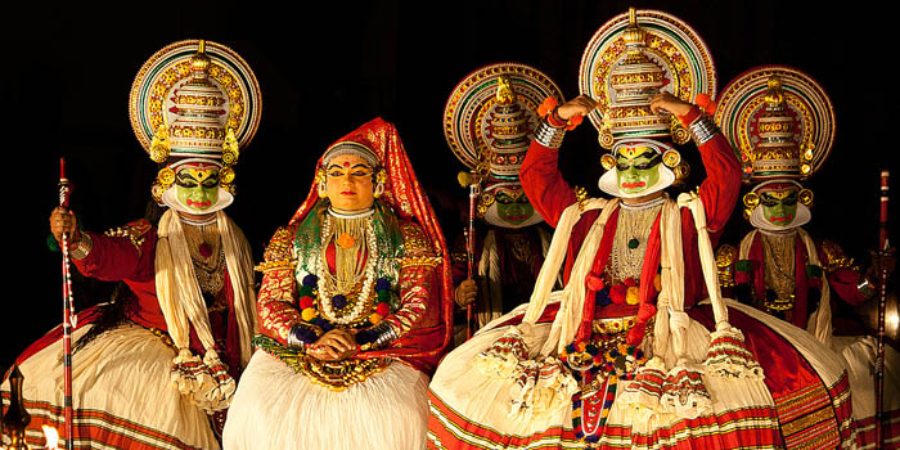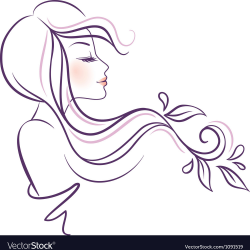

Kathakali is a unique visual art form of Kerala. The art form of Ramanatham was modified and Kathakali came into being.We see three types of characters in Kathakali, Satvika, Rajasika, and Tamasika. In a Kathakali performance. ( The characters in Kathakali are mainly portrayed as Pacha, Kathi, Kari, Thadi, and Minuk). Satvika characters are noble, heroic, generous, and refined, and are therefore grouped under certain clearly defined types like the Pacha, kathi, thadi, kari, or minukku. Kathakali is the only dance style using the entire body. Elements of classical and folk art forms such as Sastrakali, Chakyarkooth, Koiyattam, Krishnanattam, Ashtapadiyattam, Dasiyattam, Therukooth, Theiyam, Thirayattam and Padayani are visible in Kathakali. This art form, which developed in the 17th and 18th centuries, was confined to the elite, but in the 20th century, thanks to the efforts of Mahakavi Vallathol, it achieved world fame .

The dialogues in the poetic drama are composed for Kathakali, the singers sing from the background and the actors act out the poetic representation. Actors display expressive and rhythmic stage movements and limb movements during the act. As each part of the word is acted out, the kala of pure dance moves are kicked. Kathakali is the art of enacting the plot through acting and the series of scenes it contains.
Kathakali is a combination of five elements namely dance, dance, dance, song, and instrument. Apart from this, literature is a major category but it is considered as a sub-category of Gita.
Before the game starts, there are opening ceremonies like Maddalakeli (Arangukeli /Suddhamaddalam), Vandanashlokam, Thodayam, and Melapadam (Manjutara). In the background, the words sung by the Bhagwats are told through hand gestures and facial expressions. The roles in Kathakali are mainly divided into five categories namely Pacha, Kathi, Kari, Thadi, and Minuk. Pacha Salkathakatras (Satvikam) and Kathi Rajasakathatras. (Evil characters who are kings.) Karivasha is for demons. Redbeards are resident (very ferocious) monsters and blackbeards are barbarians. Kali's role is Blackbeard. Hanuman is a white-bearded character. The dress of women and sages is polished. Dressing up like this is called Chuttikuth. Everyone always likes Kathakali.
Kottarkara thampuran divided the Ramanatham into eight days and later evolved into Kathakali. It was Vettathunattu Raja who modified Kathakalivesha and used Chenda. Vettathurajavan's contribution is the way of putting up people, especially for the song, the colorful crowns, the bright colored shirts, and the colorful face writing.
Travancore kings have contributed a lot to Kathakali. 'Balaramabharata' was written by Kartika Tirunal Maharaja. The play 'Narakasuravadham' is also his work. The plays Rugminiswayamvaram, Ambarishacharitam, Poothanamoksham, and Paundrakavadham are the works of Karthikathirunal's brother Aswathi Thirunal. Unnaivariyar, who was in the audience of Kartikathirunal, composed the play 'Nalacharitam'. Aswathirunal's father Kilimanoor Koithampuran wrote 'Kamsavadham'. Vidwan Kilimanoor Koithampuran is the author of the play 'Ravana Vijayam'. Iraimman Thambi, the author of the epics Keechakavadha, Uttaraswayamvaram, and Dakshayagam, was also a debater in the royal palace.
Attakatha is the literary form of Kathakali. Attakatha is written in words and verses. The words of Attakathas are sung and acted in Kathakali. Slokas are used as a sutradharopadhi to provide scene and story direction. And difficult things to stage are also presented through slokas. Plays are an important branch of Malayalam literature. About five hundred Attakathas are part of Malayalam literature. The first Attakatha is the eight-day story of Kottarakarathampuran's Ramanatha. Kottayathampuran's Bakavadha, Kalyanasaugandikam, Kirmiravadha, Nivatakavacachalakeyavadham, Unnai Waryar's 'Nalacharitam', Iraimman Thambi's 'Uttaraswayamvaram', Keechakavadham, Kilimanur Rajarajavarma Koithampuran's Ravana Victory, Ashwathirunal Ramavarmathampuran's Rukminiswayamvaram, Poothanamoksha, Paundrakavadham, and Ambarishacharitam are among the widely popular Attakathas.


